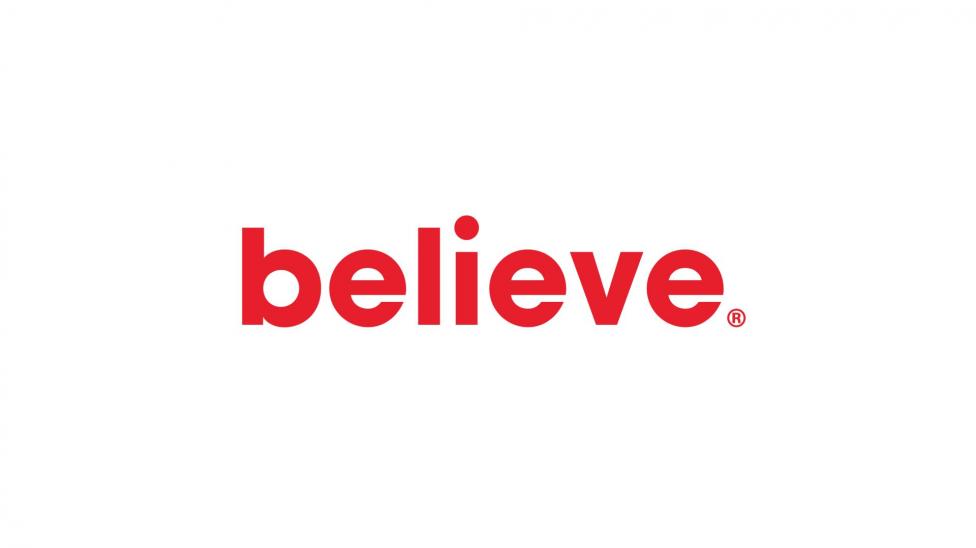
Unleashing the power of local potential: Vivek Raina on the booming Indian music market
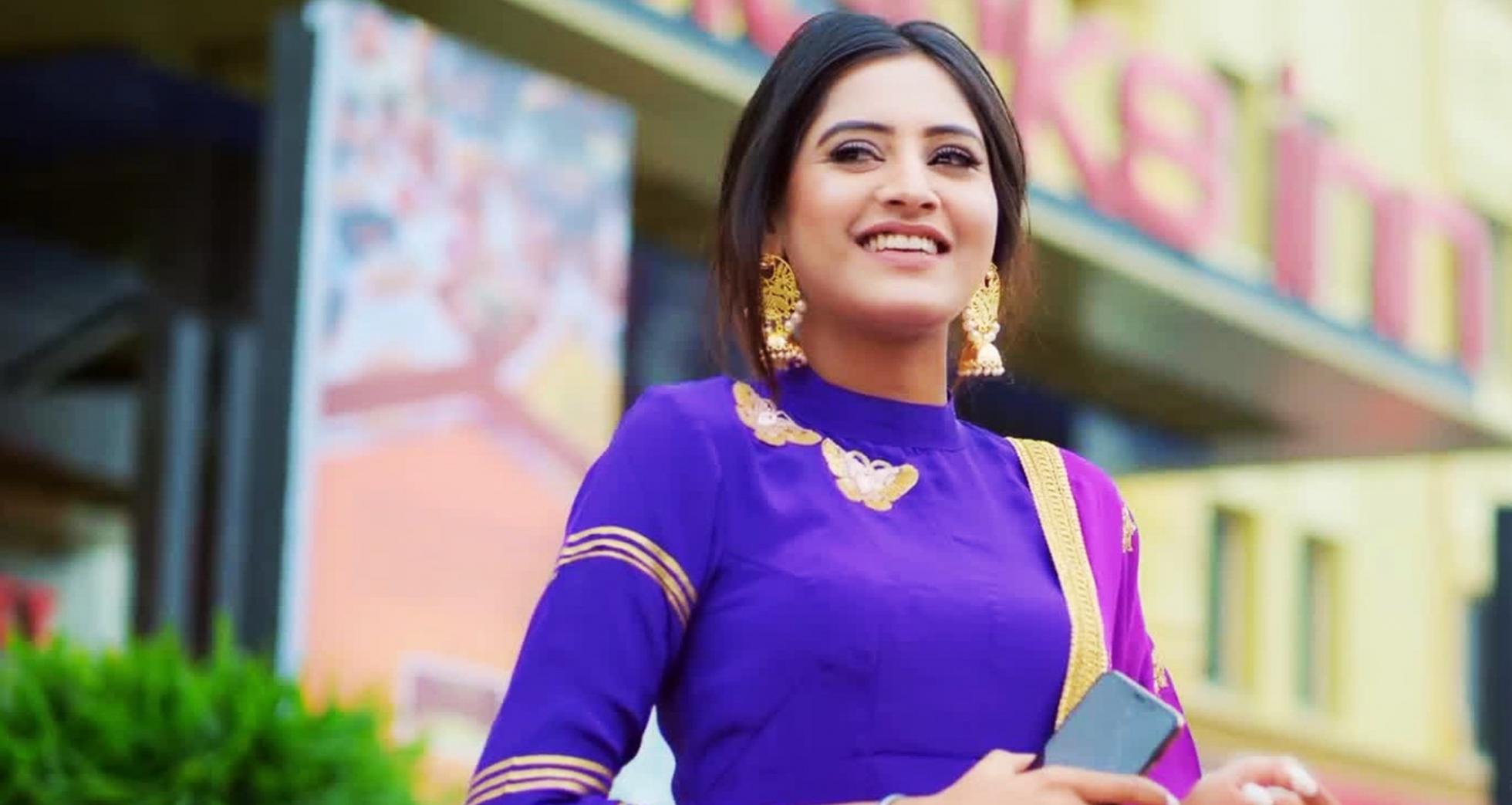
Here we speak to Vivek Raina, managing director of Believe in India, about the unique nature of the Indian market, why local language music is on the rise, where the stranglehold of Bollywood is weakening, what that means for a new wave of independent digital artists, how YouTube unlocked streaming’s potential but why the focus must now be on building a subscription-based business.
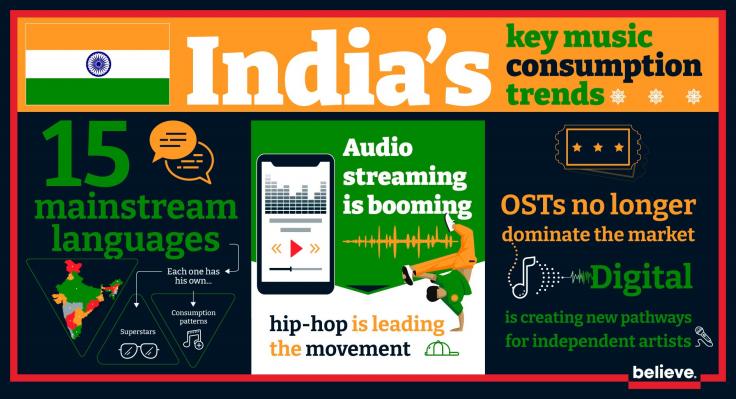
What was previously an OST market is now starting to change
India has long been an OST [original soundtrack] market, meaning music coming out of the movie, notably Bollywood films. It has been more of a song-centric market than an artist-centric market. In the movies, the artist is in the background as a playback singer or vocalist while on screen they have an actor [lip syncing].
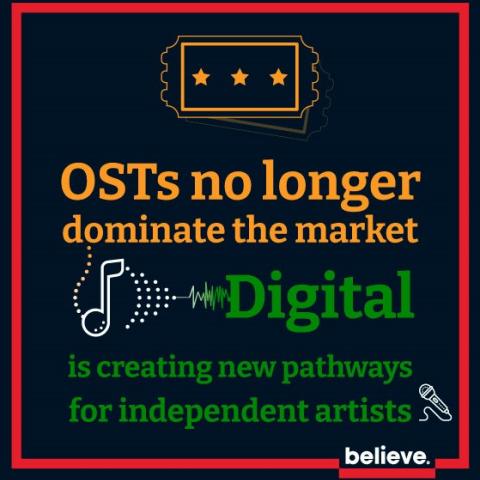
One thing which is unique in India is that it has been a visuals-central market. [The IFPI recently noted: “8 of the top 10 albums are from motion picture films. A phenomenon that is unique to the Indian music market.”]
That is because music has been an integral part of the movies in the past and continues to be: music is seen first, which triggers connections and emotions. However, this trend appears to be slowly changing where we see a few tracks picking up without necessarily having a music video or audio-visual asset associated with them.
There had not been a vast independent artist sector in India until 10 or 12 years ago. It's only in the last decade that the OST market has started shrinking to some extent.
Because of digital, new artists coming out are not relying on an OST to feature them and for them to be heard.
Music has been an integral part of the movies in the past and continues to be: music is seen first, which triggers connections and emotions. However, this trend appears to be slowly changing where we see a few tracks picking up without necessarily having a music video or audio-visual asset associated with them.
Believe’s growing place in a multi-language market
In India, we run two sets of services – artist distribution and artist services. Within these two sectors, we are servicing close to 100 artists now.
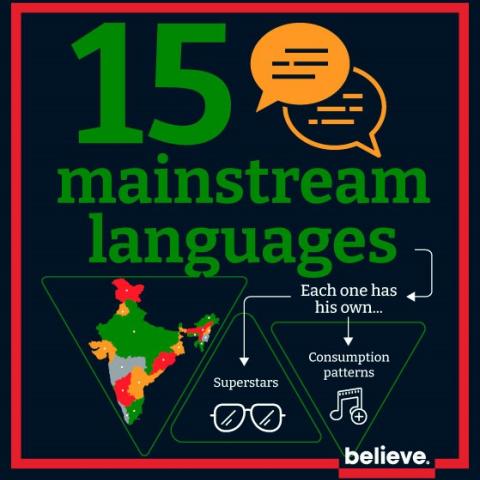
At Believe, we don't have a specific genre that we are focusing on.
India is a multi-language country. We have 22 official languages and out of that there are 15 prominent languages. Prominent means that each language has its own set of artists and its own set of music cultures.
Hindi is the most spoken language in the country but then you have Bhojpuri, Punjabi and so on.
We are seeing superstars coming from each language.
We have local hip-hop. The sound is the same but it is performed in different languages like Hindi, Punjabi, Kannada and Bhojpuri.
Key names here include MC Stan, King, Shubh, All Ok and Rahul Dit-O.
Hip-hop as a genre is on the rise in India. This tells us that it is the regional artists who are growing in the country. That's where the whole music market is moving.
We are expecting the local artists to be the local superstars. That is the first step. You have to be big in your own country before you even think of trying to become an international act.
The growing international potential for Indian artists
What we feel in a digital world is that it is a sound which travels more than language. I would not be surprised if, in the next 18-24 months, certain sounds of India travel internationally. With a big viral song that has gone international, sometimes it's not even the language that people listen to – it’s the sound.
What we feel in a digital world is that it is a sound which travels more than language. I would not be surprised if, in the next 18-24 months, certain sounds of India travel internationally.
YouTube made today’s streaming market in India possible
The biggest revolution which happened in India was YouTube about 10 or 11 years ago.
It started with the urban population because they had more money to get better mobile data plans and they had smartphones. Today, between 50% and 60% of the population have mobile data plans. Most of them have a decent smartphone as well.
YouTube is travelling not only in urban areas but also to very remote towns in India.
The adoption of audio streaming started from the urban sector. It's growing at a slow pace, but the growth is now coming from the regional markets, the tier two and tier three cities. The reason is simple: data plans are pretty cheap and everybody is on a smartphone.
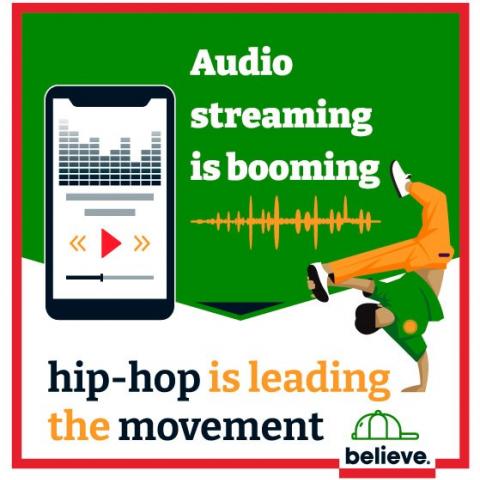
However, we are not yet a subscription model market; it is still an advertising-led model.
India is on the same curve that any emerging market has been on, where for the first four or five years, less than 1% of the population is a subscriber. After a certain point of time, it starts picking up. It is going to take about 24-36 months until we actually see subscriptions going up quickly in India.
The way we see the market is that it's going to have two sets of business lines:
- One is going to be standard subscription-based music streaming. For example, Spotify or a local service like Gaana, which doesn't have any telco ecosystem.
- There is a second market in the telecom ecosystem. We have two services here. The first Wynk, which was fundamentally created by Airtel which was one of the largest telecom operators in India. It started as a standalone service but now they're operating as a bundled service to the user.
- The second service is JioSaavn, which was earlier a standalone service but got acquired by the largest telecom operator, Jio.
With international players like Apple, Spotify, YouTube Music and Amazon alongside large local players like JioSaavn, Wynk and Gaana, the market is ripe for innovation and good competition.
Localisation of content is key
If you want to be a pan-India service, you have to cater to every artist and consumer. You have to reach the 12-15 top languages where you can showcase your talent and your music. That’s where the consumer is today.
Look at the Spotify strategy in India. At launch, it was a premium brand, an international brand, coming to India with a large international catalogue. The target audience was very urban – young kids who want to have international music.
In the past 12 months, Spotify is becoming very regional. From what we understand from their strategy, they want to expand their service and not limit themselves to a specific user base.
Before we had all the international services in India, the local services were the market leaders because everybody wanted to go there. Now we have a more democratic market. We are clearly seeing a differentiation in terms of the user base.
We're also seeing a differentiation in terms of what music is being consumed on which platform. With hip-hop today, Apple Music and Spotify are the main drivers; it is not the local services.
If you want to be a pan-India service, you have to cater to every artist and consumer. You have to reach the 12-15 top languages where you can showcase your talent and your music. That’s where the consumer is today.
Opening up the streaming market to older listeners
YouTube started with a certain [younger] demographic, but today YouTube is consumed across demographics. You will have a more senior population using it as well because it's easy to use.
Audio streaming is slowly moving there. It was fundamentally a young urban population embracing audio streaming, but in the last two years we have seen consumption of music from the '70s, '80s and '90s going up, which indicates that, demographically, a wider age range is coming in.
Social media in India
India is one of the largest users of Instagram and Facebook in the world.
We were one of the largest markets for TikTok [before it was blocked in India], but YouTube swiftly launched YouTube Shorts and we had Facebook launching Instagram Reels. They were very quick to react to the market, which covered certain gaps left after TikTok. We have also seen a lot of homegrown short-form video apps appear like Moj, MX TakaTak, Josh and Chingari, but we still have a lot of ground to cover.
The biggest challenge here is that most of the content [music clips] for an artist is not on these services. They have created a tech platform, but still don't understand how to integrate with the music ecosystem.
We still don't have a one-window clearance license when it comes to short-form video. If I'm a short-form video platform, I still have to go through multiple deals to make sure that I get the maximum catalog. Fundamentally, they have a challenge in terms of how many deals they can cut.
Regional music – so non-Hindi music – is on the rise. That means they are penetrating deeper into the population of India in different languages. Audio streaming is booming. And independent music, namely music outside the OST world, is going up.
The next big growth areas
Regional music – so non-Hindi music – is on the rise. That means they are penetrating deeper into the population of India in different languages. Audio streaming is booming. And independent music, namely music outside the OST world, is going up.
In India, Believe is the largest player in this digital market and independent sector right now. If you're an international company, it's a no-brainer that these are the trends you need to catch up on.
The OST sector has almost a 75% market share across languages. We are seeing that changing – to an extent.
If you're a movie producer, you have composers, authors and artists who work for hire. You create the music and then you sell it to a music label. The producers have realized that there's a market which allows them to monetize their music on their own and allows them to keep the rights of the songs instead of selling it to a music label.
We are also seeing the large, local independent labels becoming producers themselves, which means the labels are now getting into movie production.
It's a very early trend, but I think this is the way forward and shows how the artist economy has moved on.
Artists now think about independence. They either work with a service company or they work with a distribution company.
Live music
In the last six months we have seen live coming back. There are a few medium-sized festivals which are lined up this year, but it’s not at the peak we saw in 2019.
Believe also runs events in the live sector in India. The number of inquiries we get for booking an artist or setting up an event for a brand is on the rise.
Maybe in six months we should be back to pre-pandemic levels. In general, live is quite a big market in India and every region has its own stars that fans want to follow.
There are several types of events here. One is the corporate event where, for example, a large bank wants to put on events for their employees or their customers. The second is sponsored festivals – generally medium-sized festivals. The third is a very limited ticketing event.
India is still not a high ticketing market: around 80% of events are sponsored as opposed to ticketed.
It still needs a lot of structuring in terms of creating live venues as we don't have too many venues in the country. These are generally in a big hall, in a ballroom or at festivals. There are very limited locations where we can do festivals. That's a big challenge for the country: how do we create more venues?
As soon as we have more ticketed events, the dynamics will change. But it might take a little more than what we have seen in digital.
[Live music] still needs a lot of structuring in terms of creating live venues as we don't have too many venues in the country. These are generally in a big hall, in a ballroom or at festivals. There are very limited locations where we can do festivals. That's a big challenge for the country: how do we create more venues?
Challenges for the future
One is a challenge from the government itself. There are a few things within the Copyright Act which, as a part of the Indian Music Industry trade body, we're trying to work out. How do you make it much clearer for the players like DSPs, the artists and the record labels?
The second challenge is more about education of the consumers. How do you create brand value today?
Spotify is looked at as a premium brand amongst young consumers. They don't mind paying for a subscription, but the prices today are already low – you're talking about $1.50 or $2 for a monthly subscription. That needs to change. All players are trying to do that, but there needs to be education for the masses about why music is a premium service. If you want to enjoy it, you have got to pay for it.
We had a similar issue with the movie industry when we had a lot of piracy 15 years back. Because it is a larger industry, it worked with the government agencies on consumer education. There was constant messaging to the users: 'Piracy is not right. It's illegal.'
In the OTT market today with Netflix, Amazon and other local players, subscription is very high in India. If they can grow, why not music?
It's about education: right timing, right messaging.
About Vivek Raina:
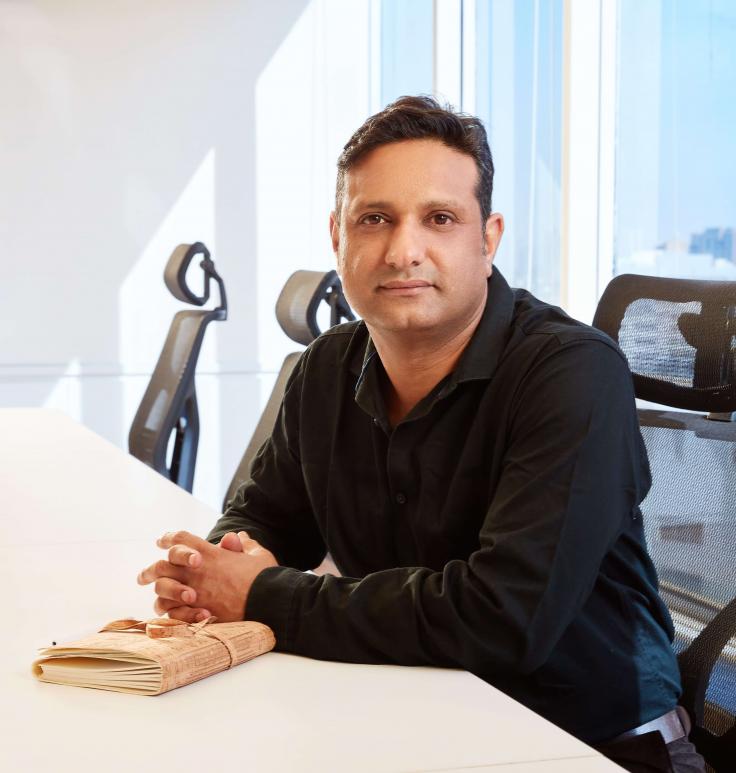
Currently working as Managing Director for Believe in India, Vivek Raina was instrumental in setting up the local entity for Believe, focusing on identifying key strategic alliances across labels and artists' services in India, as well as building up scalable sales/service organization including key M&A since 2019 across brand partnerships, live and music catalog verticals.
With a career spanning over 17 years in the music business with experiences around music digital music distribution channels, Telecom VAS marketing, Sales Services around music labels and artists services, Raina is part of the Pioneer team in the digital and mobile music revolution in the Asia-Pacific region, looking to create viable businesses and establish brands that would help differentiate, define, and grow the sector.
